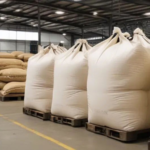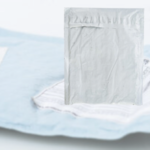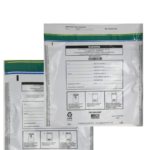
Guide to Evidence Collection Materials
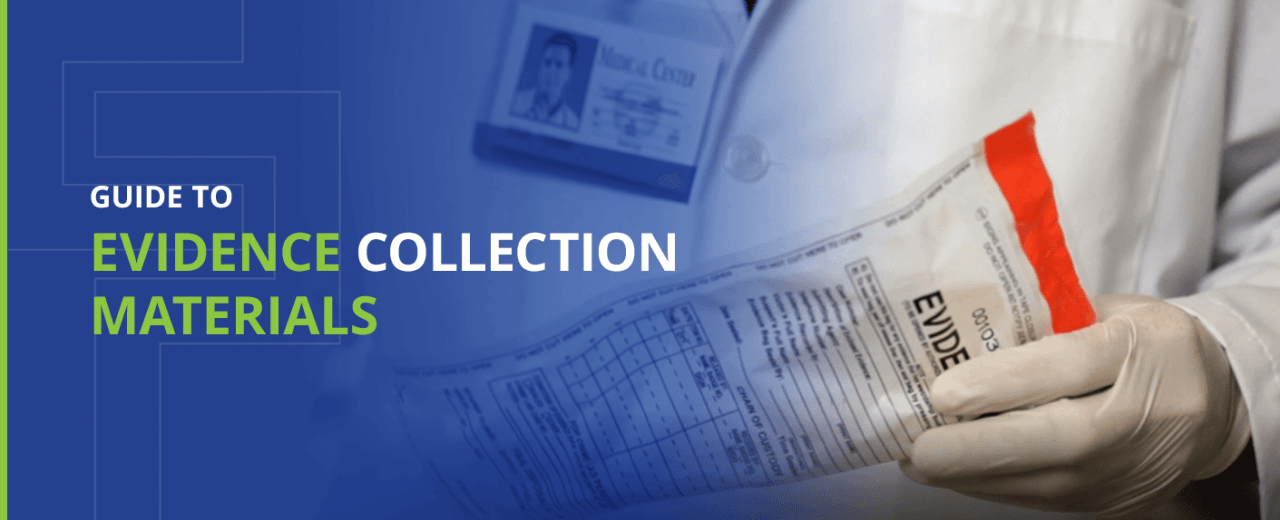
Preserving evidence is crucial when identifying suspects and bringing justice to crime victims. When collecting evidence as an investigator, you must protect materials with proper packaging. Evidence packaging protects against evidence loss, cross-contamination, deterioration and harm to personnel. However, various types of evidence require different kinds of containers to ensure the integrity of substances.
It’s essential that investigators and other authorities identify different types of evidence to ensure proper packaging for storage. Keep reading to discover how investigators collect and package evidence.
What Needs to Be Collected at a Crime Scene?
After you thoroughly document evidence’s location on a crime scene, the collection process can begin. How you search a crime scene depends on the type of crime, time of day, location and available equipment and available personnel. Because sensitive evidence like hairs and fibers can be easily lost from a crime scene, you must collect evidence as soon as possible after the crime occurs.
While all evidence is potentially helpful for solving a crime, some evidence provides more insight. For example, rather than spending copious amounts of time collecting trace evidence, you should prioritize documenting biological and print evidence, as it’s more likely to identify perpetrators.
Typical evidence collected at a crime scene includes:
- Biological: The DNA in biological evidence, including blood and other bodily fluids, hair, fingernails and other tissues, can help identify criminals. A victim’s clothing and bodily injuries can often reveal biological evidence.
- Prints: Fingerprints and footprints place an individual at a crime, as each individual’s prints are unique. Further, collecting prints requires few materials.
- Tracks: Tire and shoe tracks can help place a suspect at a crime scene. Before you try to collect tracks via casts made of dental stone, you should document the scene with photographs.
- Trace: Trace evidence includes small, fine objects like fibers, soil, sand, grass, adhesives or glass fragments.
- Weapons: While weapons can provide insight into potential suspects, bullets and casings can also identify the weapon used. Toolmarks are also indicative of any other instruments a suspect may have used.
You will want to package evidence in tamper-proof paper and plastic containers for safe transport.
What Are the Tools and Materials Used in Evidence Collection?
While evidence collection tools and materials may vary due to the nature of a particular crime, you’ll typically use a common evidence collection kit. Regardless of the type of crime scene, be sure to wear and change gloves frequently during collection. You will also want to wear a mask, protective face shield, protective clothing and disposable shoe covers to prevent evidence interference.
Evidence collection kits typically include:
- Storage containers: Plastic and paper evidence pouches and bags keep evidence safe from contamination during transport. Small plastic containers are used to store wet evidence like bodily fluids.
- Swab kits: Swabs are essential to performing DNA tests on biological evidence. Investigators store swabs in cardboard swab boxes or evidence bags. Many swab tests also require sterile water. Small, disposable bottles of sterile water ensure you can properly moisten swabs to avoid contamination.
- Evidence flags: Brightly colored flags, often yellow, pink or orange, mark evidence that requires documentation.
- Evidence marking tools: You can use different scribers and markers to make identification marks on various surfaces, including paper, plastic, metal, wood or glass.
- Portable UV light: Ultraviolet (UV) light helps you identify more details while examining wounds than the naked eye can detect. Further, UV light helps locate fiber and stain evidence.
- Tweezers: Tweezers keep sensitive evidence safe during handling and allow you to collect trace evidence. You might also use tweezers to handle documents undergoing chemical processing.
- Scrapers and disposable scalpels: Dried evidence like paint or blood can be challenging to retrieve. However, scrapers and disposable scalpels allow you to scrape evidence off surfaces for collection.
- Grabbers: Grabbers are ideal for when the evidence is a biohazard that should not be touched. Grabbers allow you to collect dangerous evidence from a safe distance.
- Vacuums: Sometimes, evidence is too fine for even tweezers or scrapers to pick up. Vacuums provide an excellent solution to collecting trace evidence and preventing cross-contamination.
- Digital camera and voice recorder: Cameras and voice recorders are useful for documenting evidence and taking notes on the go.
3 Steps of Packaging Evidence
Proper evidence packaging is crucial in criminal investigations, as inadequate packaging can compromise evidence. A significant goal of evidence packaging is to identify what the package contains and where the materials were located at the crime scene. It can also indicate what lab processing is required, any potential dangers or hazards and preferred storage conditions, such as needing to be kept refrigerated.
To properly package evidence, you’ll want to evaluate the materials to select a proper container, package evidence according to guidelines and keep evidence secure during transport and storage.
1. Evaluate the Type of Container You Need
Different kinds of evidence require various collection methods to prevent contamination. However, most evidence is kept in paper or plastic packets, pouches, envelopes or bags. Depending on the type of evidence you’re collecting, you’ll want to select either a paper or plastic pouch. You should use paper pouches for biological evidence, which allow the evidence enough air exposure to prevent deterioration.
Wet evidence should be dried before evaluation, except for items such as fluids. However, wet evidence should be stored in a nonporous, impermeable plastic or glass container and refrigerated between 2°C and 8°C (35°F to 46°F) if a crime scene lacks the equipment to dry materials when on-site. While plastic bags can provide a temporary wet evidence storage solution, investigators shouldn’t use them for the long term due to their tendency to foster bacteria and mold growth. Completely liquid materials should be collected in a spill-proof plastic container.
Before packaging evidence, you’ll also want to determine whether any biohazards or other dangerous substances require packaging, as these materials may necessitate the use of specialty packaging.
2. Properly Collect Different Kinds of Evidence
After evaluating which evidence needs packaging and whether to use plastic or paper container options, you’ll have to collect materials properly to preserve evidence. When collecting evidence, be sure to package each substance in a different container to avoid cross-contamination.
Follow these best practices for collecting different kinds of evidence:
- Biological: When collecting evidence for DNA analysis, it’s best to store biological materials in breathable storage containers. These containers prevent condensation, which can lead to mold and bacteria growth that can compromise the quality of samples. Investigators should also pack biological materials in a way that won’t compromise evidence. For example, you should always place a paper between a stain and other fabric when packaging bloody clothing.
- Trace: When packaging trace materials, first ensure they won’t fall out of a loosely sealed bag by placing them in a paper bindle. Plastic bags and pouches are the best solutions for packaging trace evidence, as they don’t permit small fragments from falling out of loose seals.
- Drugs: Clear plastic pouches are best for sealing drug evidence. Ensure seals are located far enough from materials to allow easy resealing after evaluation.
- Fingerprints: While fingerprint cards can be stored in either paper or plastic, items that have not yet been inspected for prints should be stored in containers that won’t rub against the prints. Cardboard boxes are especially useful for packaging items awaiting fingerprint examination.
- Weapons: The first step in packaging firearms is ensuring they’re unloaded. Never place anything like a pencil in the barrel of a gun, as this is incredibly unsafe and could compromise the evidence. You should also secure firearms with plastic ties behind the trigger. Knives should be placed in cardboard boxes to prevent puncturing envelopes.
3. Keep the Evidence Secured
After collecting evidence, ensure it remains free from tampering by flattening the bag’s flap with an adhesive seal. The seal should cover the entire envelope’s flap and be initialed and dated with the time. Other sealing methods include heat and lock seals.
When the evidence arrives at its destination, you should avoid storage in direct heat or cold. However, some biological materials like tissues need to be stored at frozen temperatures to prevent deterioration. Regardless of the temperature evidence requires for storage, though, you should keep materials out of direct sunlight.
What to Avoid When Collecting Evidence
You can be exposed to harmful materials like biohazards when collecting evidence. Therefore, you must avoid unsafe practices when handling evidence by wearing appropriate personal protective equipment and following all procedures. Further, you’ll have to protect the evidence itself during collection. For example, sensitive DNA evidence is easily contaminated, such as when someone coughs or sneezes. Personal protective equipment can protect evidence from DNA contamination. Ensure you avoid touching your face when handling DNA evidence as well.
Failure to conduct suspect elimination testing should also be avoided during evidence collection. For example, you must collect DNA from the victim, others who may have been at the crime scene, such as family members who share a house, and all suspects.
Collect Evidence Securely With Connover Packaging
Connover Packaging’s secure law enforcement evidence bags keep evidence safe during the collection process. The durable polyethylene film reduces the chance of punctures or tears. Plus, our bags allow for extensive documentation, including the case number, agency, officer, date and time, suspect, victim and the location of the crime scene. We’ll also work with you to provide custom evidence bags for your unique needs. Contact us today to get a quote!
Share:
Get A Quick Quote
Social Media
Most Popular
Categories
Tags
Related Posts
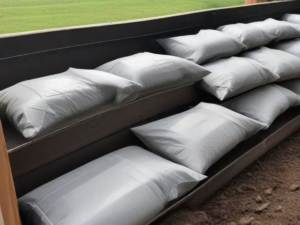
The Ultimate Guide to Organizing and Storing Soil Bags
If you’re a gardening enthusiast, you know how important it is to have good-quality soil for your plants to thrive. Soil bags, whether they be
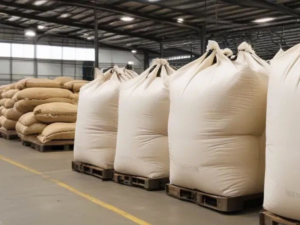
A Guide to Utilizing Bulk Bags in Agriculture: Making Farming Effortless
Bulk bags or flexible intermediate bulk containers (FIBCs) are one of the important tools used in farming practices. These large, sturdy bags offer a range

Clear Poly Mailer Bags: The Ultimate Shipping Upgrade
Shipping is a challenging aspect in the world of e-commerce. Some products like glass items, electronics, and artwork are more fragile than others. As a

